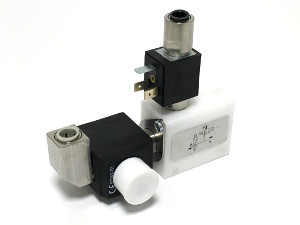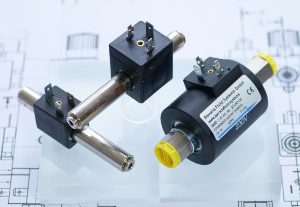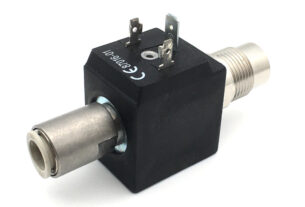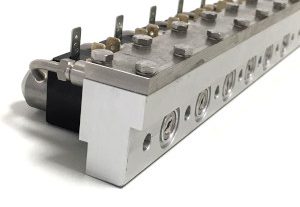Fast-acting miniature inline dosing valves play a crucial role in the food and beverage industry by controlling the precise flow of liquids and ingredients in production processes. Here’s how they work and contribute to the efficiency of these systems:
How Fast-Acting Miniature Inline Dosing Valves Work
- Actuation Mechanism:
- These valves typically operate using an electromagnetic actuator or solenoid. When an electrical signal is applied, the solenoid creates a magnetic field that moves a plunger or diaphragm, opening or closing the valve.
- The valve can switch between open and closed states very quickly (in milliseconds), allowing for precise control of fluid flow. The rapid response is critical for high-speed production lines, ensuring timely and accurate dosing.
- Inline Design:
- These valves are positioned directly in the flow path of a production line. The inline configuration ensures that the fluid passes through the valve as it moves along the pipeline.
- The compact, inline design minimizes dead space (areas where liquid can accumulate and cause contamination), making them ideal for sanitary applications like food and beverage production.
- Precise Dosing:
- The valve is programmed to dispense exact amounts of liquids or ingredients, such as flavorings, vitamins, preservatives, or carbonated gas, based on predefined parameters.
- These dosing valves are capable of controlling both the volume and frequency of fluid dispensed, which is crucial for maintaining consistent product quality and recipe accuracy.
- Flow Rate Control:
- Fast-acting valves manage the flow rate of the liquid, allowing for either continuous or pulse-based dosing. For instance, in a beverage bottling line, the valve may dispense liquid in quick bursts to match the speed of the filling operation, ensuring that each bottle receives the same amount of liquid.
- Valves can be programmed to adjust the flow rate based on changing conditions in the production line, such as bottle size or product viscosity.
- Integration with Automation Systems:
- In modern production facilities, these valves are integrated into automated systems. Sensors and controllers monitor various parameters such as fluid pressure, temperature, and flow rate.
- The valves receive signals from the control system, enabling real-time adjustments to the dosing process. This helps maintain high efficiency and reduces the risk of human error.
- Hygienic Operation:
- Fast-acting miniature inline dosing valves are designed with food-grade materials (like stainless steel or FDA-approved plastics) to meet strict hygiene standards in the food and beverage industry.
- Their sanitary design often includes features like smooth surfaces and easy-to-clean components, minimizing the risk of contamination and ensuring compliance with food safety regulations.
Example of Use in Food and Beverage Production
- Beverage Bottling: In a soft drink bottling plant, fast-acting dosing valves control the precise amount of liquid filled into each bottle. The valve opens for a fraction of a second to release a specific volume of liquid, ensuring that each bottle is filled to the correct level.
- Flavor Additives: In food production, where flavorings or colorants are added to products, miniature dosing valves control the exact amount of additive injected into a mixture. For instance, in the production of fruit-flavored yogurt, the valve ensures that each batch gets the same amount of flavor concentrate.
- Carbonation: For carbonated beverages, fast-acting valves precisely control the introduction of CO₂, ensuring the product has the right level of carbonation without waste.
Key Components of Fast-Acting Miniature Inline Dosing Valves
- Solenoid or Actuator: Drives the opening and closing of the valve with rapid response times.
- Plunger or Diaphragm: Regulates the flow of liquid through the valve.
- Sensors: Monitor flow rate, pressure, and other critical parameters to ensure precise dosing.
- Controller: Governs the valve’s operation based on feedback from sensors, ensuring accurate and timely dosing according to production requirements.
Conclusion
Fast-acting miniature inline dosing valves work by utilizing rapid solenoid-based actuation to precisely control the flow of liquids in food and beverage production processes. They are designed for high-speed, accurate, and hygienic operations, making them essential for modern automated production lines where efficiency, consistency, and food safety are paramount.
For more information about our fast-acting miniature inline dosing valves and their applications in the food and beverage industry, please do not hesitate to contact us at Bavaria Fluid Systems.



